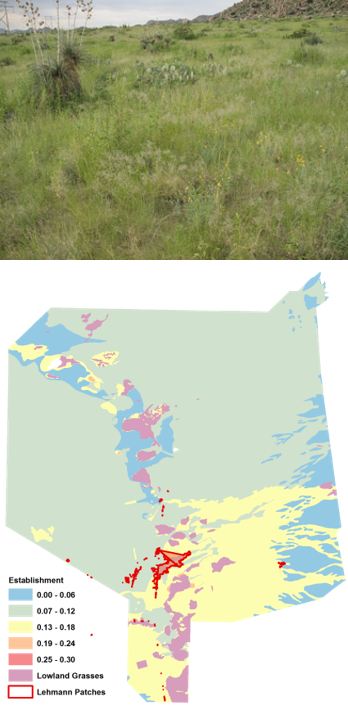Invasion of non-native species, changes in land-use regimes, and changing climate may contribute to new species assemblages and novel ecosystems in the Chihuahuan Desert. Lacking historical analogs, we are ill-equipped to predict rates and spatial patterns of change as well as ecological consequences, resulting in new management and conservation challenges. In the past 150 years, a number of novel ecosystem states have arisen in the Jornada Basin and are now under study by LTER scientists.
Research Highlights

Transitions to Novel Ecosystems
Invasions of non-native grasses in response to changing climate and land use can lead to novel ecosystems lacking historical analogs, and create new management and conservation challenges. Jornada Basin research focuses on Lehmann’s lovegrass (Eragrostis lehmanniana), an exotic perennial C4 bunchgrass. Imported into the SW US from South Africa in the 1930s, it now dominates much of the Sonoran Desert. Introduced to the Jornada Basin in 1938, its spread has been slow and variable. Because Lehmann’s produces prolific viable seed, and livestock, wind, and water are effective dispersal vectors, seed availability and dispersal constraints do not explain its lack of spread. Model results suggest variable PPT and temperature increases will increase probabilities of recruitment, especially on sandy and silty soils. When tested in the field, results revealed that black grama defoliation promoted emergence, but only when growing season PPT was between 60 and 100 mm. Germination was nil when growing season PPT was <30 mm. Emergence was also promoted in plots with rodent/lagomorph access, suggesting small mammal activities enhance recruitment.
PIs: Debra Peters, Steven Archer, Nicole Pietrasiak